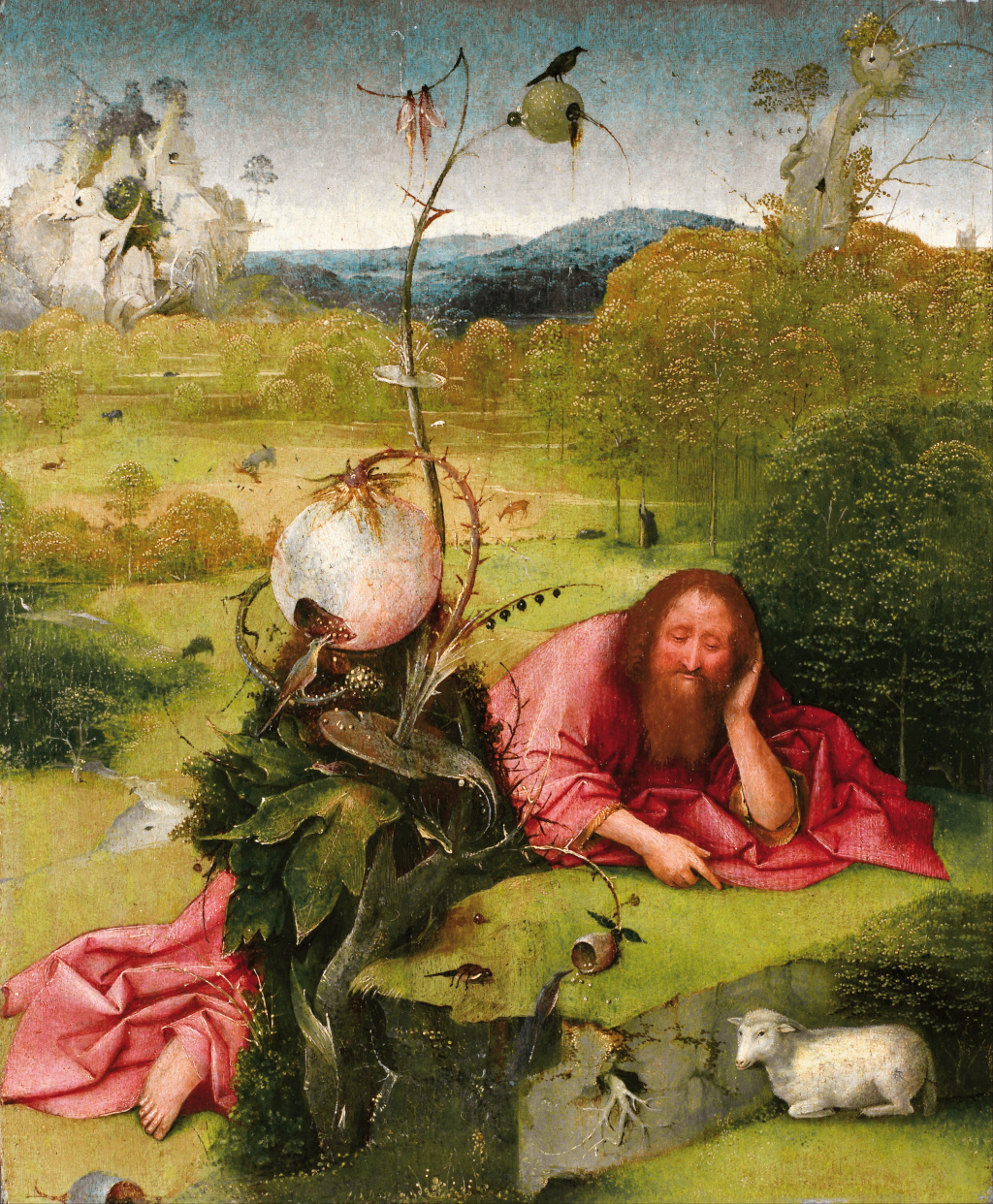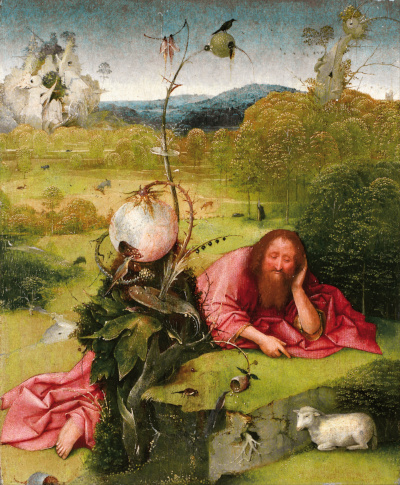St. John the Baptist in the Wilderness, also sometimes known as St John the Baptist in Meditation, is dated to around 1489. It was produced by respected master Hieronymus Bosch who specialised in figurative art and religious themes.
Introduction
Hieronymus Bosch was a deeply religious individual who included Christian themes within most of his artworks. He would innovate with an incredible imagination which allowed him to bring something fresh to North European art, which played a major role within the Renaissance. St. John the Baptist has proven a popular choice and a number of passages in the Bible which feature him has inspired artists such as Bosch. The interpretation found here, St. John the Baptist in the Wilderness, includes some unusual additions for this theme, continuing the artist's reputation for innovating beyond merely replicating how other artists had tackled the same subject. We find the saint pointing directly at a small lamb, which immediately sparks out curiosity as to the precise meaning of that. There are then other fantastical additions which are harder to define. The colour tones here are typical of Bosch, with tones of pink, green and blue bringing a bright and contemporary feel to the overall piece.
Description
The lies on the ground, looking tired. He rests his head on one arm, whilst pointing at the lamb with his other. A small flower curves to his side, with a head which looks almost like a goblet. The plant resembles something from an alien world, with a huge egg shaped head. The tall figure then continues to the side of the plant, with his foot appearing from underneath his pink clothing. A small creature lurks to the bottom left, reminding us of some of the artist's other paintings, where all manner of innovative animals are added directly from Bosch's imagination. We then find a row of trees running across the right hand side, slowly reducing in tone to build a sense of perspective. These sweep from right to left, revealing a darker toned set of hills in the background. It is a fairly upbeat piece, with none of the sorrow that other artists might normally put into Christian artworks. It is only then we delve into the history of St. John the Baptist that we understand the meaning of his time in the wilderness, providing a much better context around this painting.
Size and Medium
The painting is sized at 48.5 cm × 40 cm (19.1 in × 16 in). The artist would generally add only very small frames to his paintings, particularly when constructing triptychs. This piece may have been a wing for a larger triptych project, with St. John the Evangelist on Patmos potentially serving on the opposing wing. Many question marks remain from his career, and although some continue to be answered in the present day through extensive scientific research, it is hard to imagine them all being answered all these centuries later. It can also depend on where each artwork resides, with only some of the larger institutions having the resources and knowledge to carry out such tasks whilst still being able to protect and insure their valuable collections.St. John the Baptist in Meditation was completed in oil on wooden board, just as with the rest of this artist's career, and most other artists in this region at that time.
Location
St. John the Baptist in Meditation in the Wilderness can be found at the Museum of Lázaro Galdiano, which is in Madrid, Spain. Bosch is very well represented in the city of Madrid, with the Prado Museum close by. That extraordinary art museum hosts some of the highlights of his career, including The Garden of Earthly Delights and Haywain Triptych. Visitors will also be able to enjoy some of the finest Spanish art of all time as well, including the likes of Goya, Velazquez and Murillo all featured extensively across the city. Locally, Bosch himself is known as El Bosco and, in a similar manner to perhaps El Greco, he has become so highly regarded here that he is treated much the same as any of the great local artists. His work has been prominent with Spain for centuries, and that is likely to remain for the foreseeable future as countries continue to protect their cultural assets.
Large Image
Although this is one of Bosch's smallest artworks, he still managed to insert plenty of detail across the the wooden board. As such, we have included a larger image of St John the Baptist in the Wilderness below, allowing you to appreciate as much of it as possible. By the time that this artwork was completed, Bosch was approaching his peak as an artist and would already have covered some of these themes in previous artworks. We can see different mastered genres together within this artwork, such as a full landscape scene, figurative work and also the use of religious symbolism. He was already able to fuse these together perfectly, and his bright tones are also on display here with the bright pink clothing contrasting with the blues and greens of the grass, river and sky. The use of perspective is also slightly unusual for this period, with the saint dominating the width of the piece, leading us through to the back of the piece.





